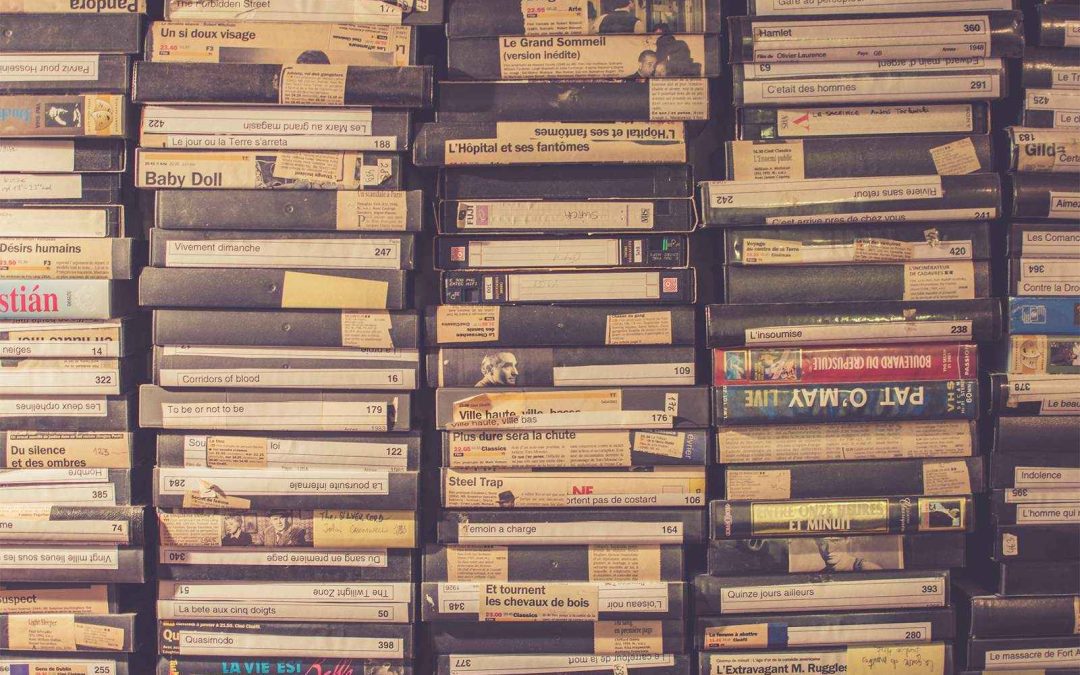The future of video transfer technology is bright! We have come a long way since the days of VHS tapes. Technology always evolving to keep pace with the latest trends and technological advances. In this blog post, we’ll take a look at the future of video transfer. Let’s focus on the latest trends and technological advances that are shaping this field.
Cloud Technology
The advent of cloud technology has transformed the way we manage our data and files, including video transfer services. This advanced technology is set to play an even greater role in the future of video transfer services. There are numerous benefits that will enhance the user experience.
The biggest advantage of cloud technology is its ability to store and access digital files from any location or device. This means that users can easily access their video files, no matter where they are or what device they are using. Cloud technology guarantees that users can access their videos on their smartphones, tablets, or laptops, regardless of their location.
Another advantage of cloud technology in video transfer services is increased security. Cloud-based storage systems utilize encryption and other advanced security protocols to protect data. So, videos remain secure and private. This advanced security system gives users the confidence that their precious memories are safe and protected.
Cloud technology also provides increased scalability to video transfer services. The demand for video transfer services continues to grow, with no sign of slowing down. Cloud technology scales up or down to meet the increasing demand, without compromising on performance or quality. This means that video transfer services can easily handle large volumes of video data. There is no need for expensive hardware upgrades or additional IT resources.
Artificial Intelligence and Machine Learning
The integration of artificial intelligence (AI) and machine learning (ML) is transforming the landscape of video transfer services. Significant advancements in the speed, accuracy, and quality of the video transfer process are coming, and quickly!
AI and ML enhance the picture and sound quality of digital files. AI-powered algorithms can analyze video content and make adjustments to color, contrast, and brightness. This results in a sharper and more vibrant picture. Similarly, AI can analyze audio content and filter out background noise, improving the overall sound quality of the final digital file.
In addition to improving picture and sound quality, AI and ML are streamlining the video transfer process. AI algorithms quickly identify and classify video content, making it easier for users to locate specific videos. Moreover, AI and ML can enhance the accuracy of video metadata. This includes dates, locations, and file sizes, providing users with a more comprehensive understanding of their video library.
AI and ML automate the video transfer process, reducing the need for manual intervention. These technologies automatically detect and correct common errors in video files, such as frame rate, aspect ratio, and resolution. Additionally, AI and ML can predict and prevent potential errors. This reduces the likelihood of data loss or corruption during the transfer process.
The use of AI and ML in the future of video transfer services provides significant benefits for both providers and users. Providers can offer a more efficient and cost-effective service. Users can enjoy improved picture and sound quality, faster transfer times, and more accurate metadata.
8K and Beyond
The introduction of 8K technology has the potential to revolutionize the landscape of video transfer services. This enables them to provide unprecedented levels of resolution and picture quality. This innovative technology will allow video transfer services to transform even the oldest and most degraded tapes into stunning, high-quality digital files.
8K technology offers four times the resolution of 4K and sixteen times that of Full HD. This means that every detail of the original recording is preserved, resulting in a more vibrant and lifelike image. 8K technology can also provide more dynamic range, offering brighter highlights and deeper shadows, resulting in a more realistic and immersive viewing experience.
Moreover, the introduction of 8K technology in video transfer services will provide significant benefits to users. With higher resolution and improved picture quality, users can expect to have a more comprehensive and detailed digital archive of their cherished memories. This will allow them to relive these moments in a more vivid and immersive way, with greater clarity and detail.
Another advantage of 8K technology in the future of video transfer services is its ability to future-proof digital files. As technology continues to evolve, and higher resolution screens become the norm, having 8K resolution digital files will ensure that users can continue to enjoy their videos in the highest quality possible for years to come.
Virtual Reality
Virtual reality (VR) technology is emerging as an exciting new trend in the world of video transfer, offering users an entirely new way to experience their cherished memories. With the introduction of VR technology in video transfer services, users will be able to immerse themselves in their videos, taking them beyond the traditional 2D viewing experience.
VR technology enables video transfer services to create a fully interactive and engaging viewing experience that can transport users to the location and moment captured in the video. This immersive experience can be especially powerful for reliving significant events, such as weddings, graduations, and family vacations, allowing users to feel like they are actually there.
Moreover, VR technology offers a more natural and intuitive way of interacting with digital content. Users can navigate through their videos using their gaze and movements, providing a sense of control and autonomy in the viewing experience. This interactivity creates a deeper sense of engagement with the content, allowing users to explore and relive their memories in a more meaningful way.
Additionally, the use of VR technology in video transfer services offers significant opportunities for businesses and organizations. For example, museums and historical societies can use VR technology to create immersive exhibits that bring history to life, offering visitors an unforgettable experience. Real estate agents can also use VR technology to create virtual tours of properties, allowing potential buyers to explore and experience the property in a more engaging and interactive way.
Augmented Reality
Augmented reality (AR) technology is quickly emerging as an exciting new trend in the world of video transfer, offering users an extra layer of interactivity in their viewing experience. With the introduction of AR technology in video transfer services, users will be able to enhance their physical world with digital content, creating a more engaging and interactive experience.
AR technology enables video transfer services to overlay digital content onto the physical world, creating a seamless blend of the real and digital worlds. This technology can be used to provide additional information or context to the video, offering users a more comprehensive understanding of the content. Additionally, AR technology can be used to create interactive experiences, such as games or puzzles, that allow users to engage with the content in a more dynamic way.
Moreover, the use of AR technology in video transfer services offers significant opportunities for businesses and organizations. For example, retailers can use AR technology to provide customers with virtual try-on experiences, allowing them to see how clothing or accessories will look before making a purchase. Additionally, museums and historical societies can use AR technology to create interactive exhibits that provide visitors with additional context and information about the exhibits.
Furthermore, AR technology offers unique advantages over other technologies, such as virtual reality (VR). Unlike VR, which requires users to wear a headset, AR technology can be experienced through a smartphone or tablet, making it more accessible and convenient for users.
The Internet of Things
The Internet of Things (IoT) has revolutionized the way we interact with our physical devices and appliances, allowing for seamless connectivity and data exchange. As the IoT continues to grow, it offers a significant opportunity for video transfer services to provide more seamless integration with a wide range of devices and platforms.
IoT technology enables devices and appliances to connect and share data with each other, creating a network of smart devices that can be controlled and monitored remotely. By integrating video transfer services with IoT technology, users can access and share their memories from any connected device or platform, whether it’s a smartphone, tablet, smart TV, or even a smart fridge.
Moreover, the integration of video transfer services with IoT technology offers significant opportunities for businesses and organizations. For example, hotels can use IoT-enabled smart TVs to offer guests access to their video archives, allowing them to relive their memories during their stay. Similarly, museums and historical societies can use IoT-enabled devices to provide visitors with enhanced digital content and information about exhibits.
Furthermore, the integration of video transfer services with IoT technology offers significant advantages over traditional methods of sharing and accessing video content. With IoT-enabled devices, users can access and share their memories seamlessly, without the need for manual file transfers or compatibility issues. This not only makes it easier for users to access and share their memories but also provides a more convenient and efficient experience.
5G Technology
The advent of 5G technology has ushered in a new era of communication and data exchange. As 5G networks continue to expand, it offers significant opportunities for video transfer services to provide faster and more reliable transfer speeds, making it easier for users to store and access their memories.
With 5G technology, video transfer services can offer enhanced features such as real-time streaming and live broadcasting. This means that users can watch their videos in real-time without experiencing any buffering or lag. Moreover, 5G technology enables video transfer services to offer high-quality video content in 4K and even 8K resolutions, providing a more immersive and enjoyable viewing experience.
Another significant advantage of 5G technology for video transfer services is its ability to reduce latency. This means that users can upload and download their videos quickly, without experiencing any delays or interruptions. Additionally, 5G networks are more reliable than previous generations, providing a more stable and consistent connection for video transfer services.
Furthermore, 5G technology provides opportunities for video transfer services to expand their offerings and reach new audiences. With faster and more reliable transfer speeds, video transfer services can offer their services to businesses and organizations, such as media companies, event organizers, and educational institutions. These organizations can use video transfer services to store and share their videos with their audiences, providing a more convenient and efficient experience.
Conclusion
In conclusion, the future of video transfer is looking bright and exciting, with the latest trends and technological advances shaping this field. From cloud technology and AI, to 8K and beyond, VR, AR, IoT, and 5G technology, video transfer services are evolving to offer better results, more convenience, and an improved viewing experience. With the help of a professional video transfer service such as Memory Fortress, you can be sure that your memories are being preserved in the best possible way, and that you’re ready for the future of video transfer.

